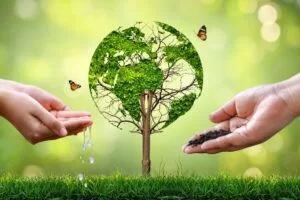Eating food that’s been grown in a laboratory might sound like something out of a science fiction movie, but it’s getting ever closer to becoming a reality.
Lab-Grown Food Getting Closer To Production, Eating food that’s been grown in a laboratory might sound like something out of a science fiction movie, but it’s getting ever closer to becoming a reality, The idea of eating food that’s been grown in a laboratory might sound like something out of a science fiction movie, but it’s getting ever closer to becoming a reality that enters mass production.
Writing for the Guardian, George Monbiot explained what he saw when he visited the lab of Solar Foods on the outskirts of Helsinki in Finland recently. He described seeing water turned into food, using a process that grows bacteria, using hydrogen extracted from water as its energy source.
He explained that the froth that’s siphoned out of the metal tank where the water and bacteria are churned up is then applied to heated rollers which turn it into “a rich yellow flour”. But this is far from the only product that such a lab can create.
“When the bacteria are modified they will create the specific proteins needed for lab-grown meat, milk and eggs. Other tweaks will produce lauric acid – goodbye palm oil – and long-chain omega 3 fatty acids – hello lab-grown fish,” Mr Monbiot revealed.
He also pointed out that the hydrogen pathway being used by Solar Foods in its production process is approximately ten times as efficient as photosynthesis.
A further advantage to embracing lab-grown food is that it takes up much less land to produce far more food than current methods of food production. This means that it could be possible to feed everyone on the planet while using a fraction of the land for food production, as well as less water than required by agriculture.
The BBC pointed out that one area where the food produced by Solar Foods could have a big impact is on soya production.
It revealed that the company expects to be able to compete with soya production costs by 2030, and possibly as soon as 2025. This could have significant implications for the farming industry – it could be used as an alternative to soya for cattle food, as well as providing the basis for growing cultured meat or fish.
The news provider also pointed out that Solar Foods is just one example of the many projects that are working towards synthesised food.
At the moment, Solar Foods is only running a demonstrator plant, but it intends to scale up soon to be able to produce its protein – named Solein – on a meaningful scale.
Mr Monbiot stressed in his article that it’s essential that this technology is shared with the world if it’s to make a real difference to the planet and to help feed those in greatest need. “If governments regulate this properly, they could break the hegemony of the massive food companies that now control global food commodities,” he asserted.
However, in order to help tackle the climate crisis, it’s essential that these new techniques use low or zero-carbon forms of energy to ensure they have lower carbon footprints than existing food sources, he added.
While the technology is developing rapidly, for now at least the current methods of food production and manufacture will continue. If you’re looking for conveyor belt pu blades for a food manufacturing plant you operate, get in touch with us to find out more about our products and services.




